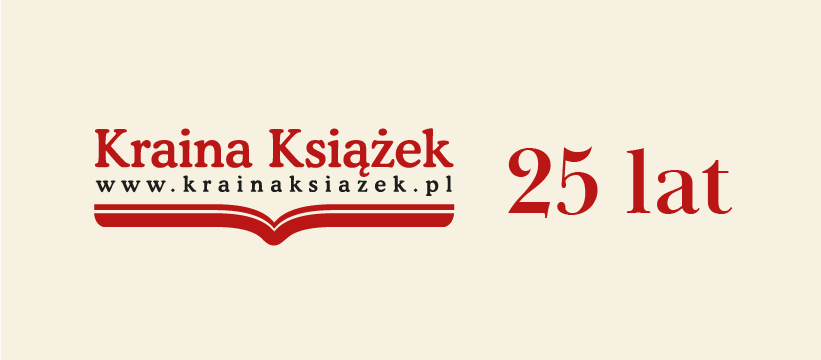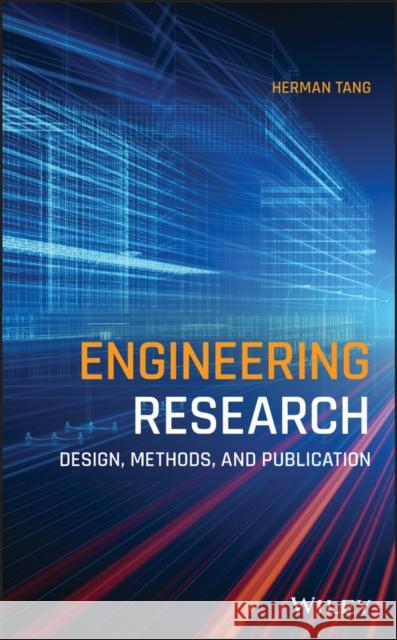Engineering Research: Design, Methods, and Publication » książka



Engineering Research: Design, Methods, and Publication
ISBN-13: 9781119624486 / Angielski / Twarda / 2020 / 416 str.
Engineering Research: Design, Methods, and Publication
ISBN-13: 9781119624486 / Angielski / Twarda / 2020 / 416 str.
(netto: 800,92 VAT: 5%)
Najniższa cena z 30 dni: 581,86 zł
ok. 16-18 dni roboczych.
Darmowa dostawa!
About the Author xviPreface xviiAcknowledgments xxiiiPart I Overview, Proposal, and Literature Review 11 Research Overview 31.1 Introduction to Research 31.1.1 What Is Research? 31.1.1.1 Seeking New Knowledge 31.1.1.2 A Systems Viewpoint 41.1.1.3 General Characteristics 51.1.2 Impacts of Research 71.1.2.1 Impacts on Societies 71.1.2.2 For Specific Objectives 81.1.2.3 Benefits to Student Researchers 91.2 Building Blocks of Research 101.2.1 Innovative Mind 101.2.1.1 Motivations to Research 101.2.1.2 Thinking and Research 111.2.1.3 Critical Thinking 121.2.2 Assumptions and Hypotheses 131.2.2.1 Assumptions 131.2.2.2 Hypothesis 141.2.3 Methodology and Methods 141.2.3.1 Methodology 151.2.3.2 Methods 151.2.3.3 Process 151.2.4 Research Community 161.2.4.1 Environment 161.2.4.2 Ethics 161.2.4.3 Funding Sources 171.3 Types of Research 181.3.1 Basic Research, Applied Research, and R&D 181.3.1.1 Basic Research 181.3.1.2 Applied Research 191.3.1.3 Engineering R&D 201.3.2 More Discussion on R&D 241.3.2.1 Objectives of Engineering R&D 241.3.2.2 Experimental and Empirical Research 251.3.2.3 Descriptive, Exploratory, Analytical, and Predictive Research 251.3.2.4 Case Study 271.4 Validity of Research Results 281.4.1 Research Validity 281.4.1.1 Concept of Validity 281.4.1.2 Internal Validity 291.4.1.3 External Validity 301.4.2 Assessment and Advance 311.4.2.1 To Get Validated 311.4.2.2 Considerations of Validities 321.4.2.3 Publication and Further Development 33Summary 35Exercises 36References 382 Research Proposal Development 432.1 Research Initiation 432.1.1 Research Proposal 432.1.1.1 Form Ideas from Problems 432.1.1.2 Idea Evaluation 442.1.1.3 Student Research Development 462.1.1.4 Proposal, Protocol, Prospectus 472.1.2 Hypotheses 482.1.2.1 Objective and Hypothesis 482.1.2.2 Format of Hypothesis 482.1.2.3 Research Based on Hypotheses 492.2 Composition of Proposal 502.2.1 Key Elements of Proposal 502.2.1.1 Proposal Format and Structure 502.2.1.2 Research Objectives 512.2.1.3 Proposal Summary and Description 522.2.1.4 Student Competition and Proposals 532.2.2 Other Sections of Proposal 542.2.2.1 PI and Team 542.2.2.2 Budget Plan 542.2.2.3 Supporting Materials 552.3 Proposal Development 562.3.1 Essential Issues 562.3.1.1 Meeting Requirements 562.3.1.2 Planning for Outcomes 572.3.1.3 Methods Overview 572.3.2 Tasks of Development 592.3.3 Development Process 622.3.3.1 Overall Proposal Development 622.3.3.2 Three Key Aspects 622.3.3.3 Two-step Development 642.4 Evaluation and Revision 652.4.1 Evaluation for Success 652.4.1.1 Drafting and Revision 652.4.1.2 Evaluation Overview 662.4.1.3 Evaluation Criteria 672.4.2 Self-assessment 682.4.2.1 Two Key Factors to Address 682.4.2.2 A Review Checklist 692.4.2.3 A Simple Evaluation 712.5 Considerations For Improvement 722.5.1 Paying Attention 722.5.1.1 Research Aims 722.5.1.2 Detail Level of Proposal 722.5.1.3 Other Concerns 732.5.1.4 Additional Preparation Tips 732.5.2 More Considerations 742.5.2.1 Pilot Study 742.5.2.2 Cross Disciplinary 742.5.2.3 Backup Plan 752.5.2.4 Unsuccessful Proposals 76Summary 77Exercises 78References 803 Literature Search and Review 853.1 Introduction to Literature Review 853.1.1 Overview of Literature Review 853.1.1.1 What Is Literature Review 853.1.1.2 The Formats of Literature Review 853.1.2 Purposes of Literature Review 863.1.2.1 To Understand Status Quo 863.1.2.2 To Learn from Other Professionals 873.1.2.3 To Look for New Opportunities 883.1.2.4 To Assess Research Methods 893.1.2.5 To Justify Proposed Research 903.1.3 Keys of Literature Review 903.1.3.1 Review Process 903.1.3.2 Information Processing 913.1.3.3 Focuses and Structure of Review 923.1.3.4 Items of Significance 933.2 Literature Sources and Search 943.2.1 Information and Process 943.2.1.1 Search Process 943.2.1.2 General Information Sources 953.2.1.3 Scholarly Publications 963.2.2 Literature Sources 973.2.2.1 Scholarly Databases 973.2.2.2 Public Domain Internet 973.2.2.3 Open Access 993.2.2.4 Patents 1003.2.3 Considerations in Search 1033.2.3.1 Using Keywords 1033.2.3.2 Search with Constraints 1043.2.3.3 Currency of Literature 1053.2.3.4 When to Stop 1073.3 Conducting Literature Review 1083.3.1 Basic Tasks 1083.3.1.1 Overall Attention 1083.3.1.2 Organizing Analysis 1093.3.1.3 Making Good Argument 1103.3.2 Focal Points 1113.3.2.1 On Methods 1113.3.2.2 Exploring Trends 1123.3.3 Standalone Review Articles 1123.3.3.1 Review Articles 1123.3.3.2 To Prepare Review Article 1133.3.3.3 Structure of Literature Review 1143.3.4 Writing Considerations 1163.3.4.1 Professional Tone 1163.3.4.2 Citation and Format 1173.3.4.3 Common Concerns 117Summary 118Exercises 119References 121Part II Quantitative and Qualitative Methods 1274 Research Data and Method Selection 1294.1 Data in Research 1294.1.1 Data Overview 1294.1.1.1 Data and Research 1294.1.1.2 Data Management 1294.1.1.3 Data Science 1314.1.2 Characteristics of Data 1324.1.2.1 Data Distributions 1334.1.2.2 Considerations in Research Data 1334.1.3 Data Analysis 1354.1.3.1 Prep to Data Analysis 1354.1.3.2 Overall Data Analysis 1364.2 Types of Data 1374.2.1 Basic Types of Data 1374.2.1.1 Primary Data 1374.2.1.2 Secondary Data 1374.2.1.3 Open Data 1394.2.2 Quantitative vs. Qualitative Data 1404.2.2.1 Numerical or Non-numerical Data 1404.2.2.2 Quality of Quantitative Data 1414.2.2.3 Reliability of Qualitative Data 1414.2.3 Scales of Data 1424.2.3.1 Nominal Data 1424.2.3.2 Ordinal Data 1434.2.3.3 Binary Data 1434.2.3.4 Interval and Ratio Data 1444.3 Data Collection 1444.3.1 Data Collection Sampling 1444.3.1.1 Purpose of Data Sampling 1444.3.1.2 General Considerations for Sampling 1454.3.1.3 To Determine Sample Size 1464.3.2 Probability Sampling Methods 1474.3.2.1 Simple Sampling 1474.3.2.2 Systematic Sampling 1484.3.2.3 Stratified and Cluster Sampling 1484.3.3 Non-probability Sampling Methods 1484.3.3.1 Types of Non-probability Sampling 1484.3.3.2 Characteristics of Non-probability Sampling 1504.4 Method Selection 1514.4.1 Selection Factors 1514.4.1.1 Objective Driven 1514.4.1.2 Data Based 1524.4.1.3 Various Process Steps 1534.4.2 Qualitative and Quantitative 1544.4.2.1 Qualitative vs. Quantitative 1544.4.2.2 Induction vs. Deduction 1564.4.2.3 Method Evaluation 1574.4.3 Other Considerations 1574.4.3.1 Knowledge and Preference 1574.4.3.2 Possibility of Different Methods 1584.4.3.3 Purposeful Data Selection 1594.4.3.4 Non-data-related Research 159Summary 160Exercises 162References 1645 Quantitative Methods and Experimental Research 1715.1 Statistical Analyses 1715.1.1 Descriptive Statistical Analysis 1715.1.1.1 Overview of Statistical Analysis 1715.1.1.2 Purposes of Descriptive Analysis 1725.1.1.3 Central Tendency 1735.1.1.4 Variability 1735.1.2 Inferential Statistical Analysis 1745.1.2.1 Characteristics of Inferential Analyses 1745.1.2.2 Data Association 1745.1.2.3 Analysis of Variance (ANOVA) 1755.1.2.4 Regression Analyses 1765.1.3 Interpretation of Analysis Results 1795.1.3.1 Hypothesis Testing Process 1795.1.3.2 Hypothesis Test Results 1805.1.3.3 Outlier Detection and Exclusion 1805.1.3.4 Identifying Limitations of Study 1815.2 Quantitative Research 1825.2.1 Mathematical Modeling 1825.2.1.1 Concept of Modeling 1825.2.1.2 Applications of Math Modeling 1835.2.2 Optimization 1835.2.2.1 Concept of Optimization 1835.2.2.2 Optimization Applications 1845.2.3 Computer Simulation 1855.2.3.1 Concept of Simulation 1855.2.3.2 Common Types of Simulation 1865.2.3.3 Examples of Simulation 1885.2.4 New Technologies 1895.3 Experimental Studies 1895.3.1 Overview of Experimental Studies 1905.3.1.1 Basic Elements of Experiments 1905.3.1.2 Influencing Factors 1915.3.1.3 Other Considerations 1915.3.2 Comparative Studies 1925.3.2.1 Concept of Comparative Studies 1925.3.2.2 True Experimental Design 1935.3.2.3 Other Comparative Designs 1955.4 Factorial Design of Experiment (DOE) 1965.4.1 Introduction to DOE 1965.4.1.1 Concept of DOE 1965.4.1.2 Advantage of DOE 1965.4.1.3 Two-level Factorial Design 1985.4.2 Process of DOE Applications 1985.4.2.1 Overall Procedure 1985.4.3 Considerations in DOE 2015.4.3.1 Basic Requirements 2015.4.3.2 Fractional Factorial Designs 202Summary 203Exercises 204References 2066 Qualitative Methods and Mixed Methods 2136.1 Qualitative Research 2136.1.1 Qualitative Research Basics 2136.1.1.1 Qualitative Methods Overview 2136.1.1.2 Methods of Qualitative Analysis 2146.1.1.3 Concepts and Applications 2146.1.1.4 Using Qualitative Methods 2166.1.2 Discussion on Qualitative Analysis 2176.1.2.1 Qualitative Data and Research 2176.1.2.2 Reflexive Thinking 2186.1.2.3 Qualitative Analysis in Engineering 2196.2 Questionnaire Survey 2206.2.1 Basics of Survey 2206.2.1.1 Survey Basics 2206.2.1.2 Applications of Survey in Engineering 2216.2.1.3 Structure of a Survey 2216.2.1.4 Characteristics of Survey Study 2226.2.2 Questionnaire Development 2246.2.2.1 Development Tasks 2246.2.2.2 Preparing Questions 2256.2.2.3 Rating Scale 2266.2.2.4 Open-Ended Questions 2276.2.3 Considerations in Conducting Survey 2286.2.3.1 Validation 2286.2.3.2 Anonymity 2286.2.3.3 Return Rate 2286.2.3.4 Incentive 2296.2.4 Data Analysis of Survey Results 2296.2.4.1 Data Coding 2296.2.4.2 Types of Data Analysis 2306.3 Interviews and Observations 2316.3.1 Interview Studies 2316.3.1.1 Overview of Interviews 2316.3.1.2 Types and Characteristics of Interviews 2326.3.1.3 Considerations in Interviews 2326.3.1.4 Limitations of Interviews 2336.3.2 Focus Group Studies 2336.3.2.1 Objective of Focus Group 2336.3.2.2 Execution of Focus Group 2346.3.2.3 Considerations of Focus Group 2346.3.3 Observational Studies 2356.3.3.1 Execution of Observational Studies 2356.3.3.2 Advantages of Observational Studies 2356.3.3.3 Limitations of Observational Studies 2366.4 Mixed-Method Approaches 2366.4.1 Combination of Two Types of Methods 2366.4.1.1 Characteristics of Mixed Methods 2366.4.1.2 Considerations for Using Mixed Methods 2376.4.1.3 Applications of Mixed Method Research 2386.4.2 Method Integration 2406.4.2.1 Integration Considerations 2406.4.2.2 Discussion of Mixed Methods 242Summary 243Exercises 245References 246Part III Management, Writing, and Publication 2537 Research Execution and Management 2557.1 Basics of Project Management 2557.1.1 Life Cycle of Research Project 2557.1.1.1 Research Life Cycle 2557.1.1.2 Main Aspects of Research Project 2557.1.1.3 Overall Efforts 2567.1.1.4 Continuous Advance 2597.1.2 Performance of Research Project 2607.1.2.1 Performance and Planning 2607.1.2.2 Execution and Reporting 2617.1.2.3 Progress Monitoring 2627.1.2.4 Project Adjustments 2627.2 Research Administration 2657.2.1 Overall Functionality 2657.2.1.1 Goals of Research Administration 2657.2.1.2 Administration and Support 2657.2.1.3 Main Research Offices 2677.2.1.4 Teamwork Between PI and RA 2687.2.2 Academic Integrity 2697.2.2.1 Research Misconduct 2697.2.2.2 Plagiarism 2717.2.2.3 Conflicts of Interest 2717.2.2.4 Export Controls 2727.3 Pre-Award Management 2737.3.1 Tasks and Funding 2737.3.1.1 Pre-Award Tasks 2737.3.1.2 Support to Proposal Development 2747.3.1.3 Internal Funding 2757.3.1.4 External Funding Search 2757.3.1.5 Funding Sources 2767.3.2 Proposal Development 2777.3.2.1 Assistance from RA 2777.3.2.2 Budgeting Considerations 2787.3.2.3 Proposal Checklists 2797.3.3 Human Subjects (IRB) 2807.3.3.1 Human Subjects Related 2807.3.3.2 IRB Reviews 2807.4 Post-Award Management 2827.4.1 Project Acceptance and Set Up 2827.4.1.1 Award Acceptance 2827.4.1.2 Project Set Up 2827.4.1.3 Project Reports 2837.4.1.4 Project Changes 2837.4.2 Application of Invention Patents 2847.4.2.1 Considerations for Patent 2847.4.2.2 Types of Patent 2847.4.2.3 Patent Application Process 2857.4.3 Project Closeout 2877.4.3.1 Basic Process 2877.4.3.2 Final Reports 2887.4.3.3 Other Administrative Tasks 289Summary 289Exercises 290References 2928 Research Report and Presentation 2978.1 Introduction to Academic Writing 2978.1.1 Academic Writing 2978.1.1.1 Academic Writing Overall 2978.1.1.2 Requirements of Academic Writing 2988.1.1.3 Elements and Their Significance 2988.1.2 Common Types 2998.1.2.1 Thesis and Dissertation 2998.1.2.2 Project Report 3018.1.2.3 Case Study Report 3018.1.3 Reports and Papers 3028.1.3.1 Types of Research Articles 3028.1.3.2 Technical Reports Vs. Scholarly Papers 3028.2 Elements of Report and Thesis 3038.2.1 Key Elements 3038.2.2 Core Elements 3088.2.3 Supporting Elements 3128.3 Development of Research Report 3158.3.1 Process of Write-ups 3158.3.1.1 Writing Sequence 3158.3.1.2 Timing and Efforts 3168.3.1.3 Update and Revision 3168.3.2 Writing Format 3178.3.2.1 Common Writing Styles 3178.3.2.2 Sections and Headings 3178.3.2.3 Figures and Tables 3188.3.2.4 Equations and Special Symbols 3188.3.3 Other Considerations 3188.3.3.1 Statements and Limitations 3198.3.3.2 Conciseness and Wording 3198.3.3.3 Other Tips on Writing Style 3218.4 Research Presentation 3228.4.1 Presentation at Conference 3228.4.1.1 Attending Conferences 3228.4.1.2 Presentation and Keynote 3228.4.1.3 Poster Presentation 3238.4.1.4 Conference Costs 3248.4.2 Presentation Design 3248.4.2.1 Number of Slides 3258.4.2.2 Slide Layout 3268.4.2.3 Graphics and Fonts 3288.4.3 Considerations for Presentation 3288.4.3.1 Practice for Overall Flow 3288.4.3.2 Professional Presenting 3298.4.3.3 Q&A Management 3308.4.3.4 Student's Projects 330Summary 331Exercises 332References 3349 Scholarly Paper and Publication 3399.1 Considerations For Publication 3399.1.1 To Publish, or Not To Publish 3399.1.1.1 Possible Outlets 3399.1.1.2 Objectives of Publications 3399.1.1.3 Overall Publication Status 3409.1.1.4 Publication of Industrial R&D 3419.1.2 Types of Publication 3439.1.2.1 Types of Journal Papers 3439.1.2.2 Other Types of Publication 3449.1.3 Paper Quality 3459.1.3.1 Basic Requirements for Publication 3459.1.3.2 Preparation for Reviews 3469.2 Publication Process 3479.2.1 Overall Publication Process 3479.2.1.1 Main Steps 3479.2.1.2 Copyright Paperwork 3499.2.2 Peer Review Process 3509.2.2.1 Peer Review Overview 3519.2.2.2 Review Process and Ratings 3519.2.2.3 Characteristics of Peer Review 3529.2.2.4 Peer Review for Conference 3539.2.3 Review Comment and Response 3539.2.3.1 Comments and Recommendations of Reviewers 3539.2.3.2 Response to Peer Review 3549.2.3.3 Rejection Handling 3559.3 Target Scholarly Journals 3569.3.1 Journal Selection 3569.3.1.1 Overall Considerations 3569.3.1.2 Relevance 3579.3.1.3 Quality Factors 3579.3.1.4 Publishing Cost 3599.3.2 Journal Quality Indicators 3609.3.2.1 JCR Impact Factor 3609.3.2.2 CiteScore 3619.3.2.3 Other Indicators 3619.4 Writing For Publication 3629.4.1 From Report to Paper 3629.4.1.1 Additional Revision 3629.4.1.2 Elements of Research Paper 3629.4.1.3 Convert Thesis to Paper 3639.4.1.4 English Writing 3649.4.2 Abstract 3649.4.2.1 General Requirements 3649.4.2.2 Examples for Discussion 3659.4.2.3 Structured Abstract 3659.4.2.4 Highlights 3679.4.2.5 Keywords 3689.4.3 Other Sections 3699.4.3.1 Introduction 3699.4.3.2 Discussion 3699.4.3.3 Optional Items 3709.4.4 Publishing Ethics 3709.4.4.1 Appropriate Citation 3709.4.4.2 Authorship 3719.4.4.3 Exclusive Submission 3739.4.4.4 Publishing COI and IRB 373Summary 374Exercises 375References 376Epilogue 381Index 383
HERMAN TANG, PHD, is Associated Professor at Eastern Michigan University. He is also Associate Editor for a scientific journal and a paper series, as well as a peer reviewer for over ten journals. He was Lead Engineering Specialist at Fiat Chrysler Automobiles and has published two books on vehicle manufacturing and many research papers.
1997-2025 DolnySlask.com Agencja Internetowa
KrainaKsiazek.PL - Księgarnia Internetowa









